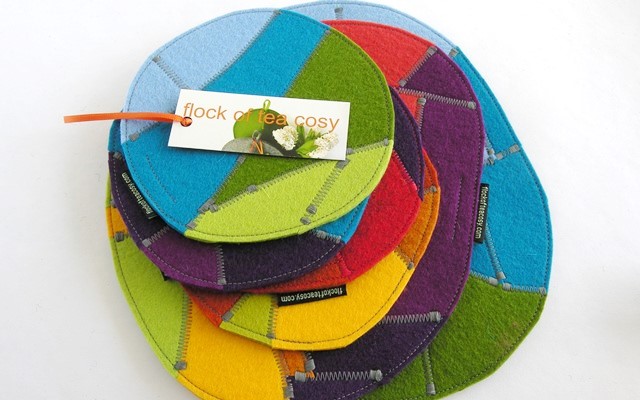
by Flock of Tea Cosy | Flock's Diary of modern wool felt teaware

Puzzle-piece wool felt tableware
A few years ago the “Puzzle Pieces” were introduced after the pile of tea cosy offcuts next to the sewing machine became too high to ignore. This fine quality, well-made 100% wool felt from Europe was just too dear to throw out — and the colourful scraps far too pretty to ignore.

The excellent manufactured wool felt that Flock of Tea Cosy uses (both the locally made Industrial felt and the colourful European felt) is wonderfully consistent — exactly 1/8″ thick, evenly dense, smooth, crisp and clean looking, and the rich jewel-tone colours are pretty and colour-fast, remaining bright for years. The natural baaa-baaa colour of the industrial felt also holds its natural colour.

Wool felt coasters, trivets, hotpads, table-toppers
I was particularly drawn to this wool felt’s density which makes it an excellent insulator — perfect for tea, coffee and mug cozies. When noodling for ideas of what to make with the many small off-cuts it was primarily the insulating quality that inspired me. The result is a bevy of coasters, trivets, hotpads and table toppers that protect surfaces from hot teapots, warm serving plates, and damp vases.
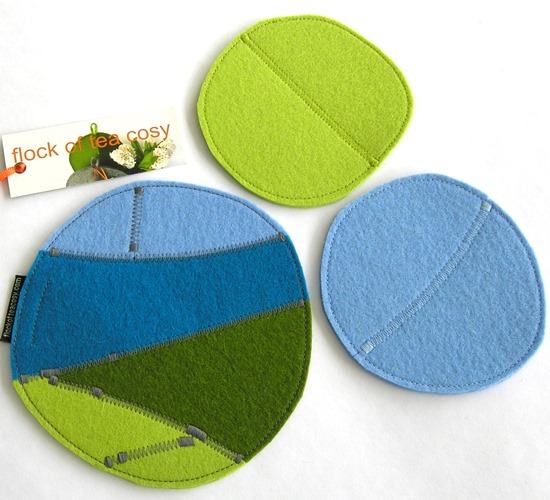
Their making is akin to the quilts or rag-rugs our grand- and great grandmothers used to make using up otherwise useless scraps and small fabric pieces, although I take a much more free-form approach. Their rugs and quilts embodied an ethos that is enduringly forward- thinking and contemporary which we now call “green thinking” or “eco-friendly.”
Carefully fitting the trivets, coasters, etc together is a wonderful piece of puzzling so they’ve been dubbed “the puzzle pieces.”
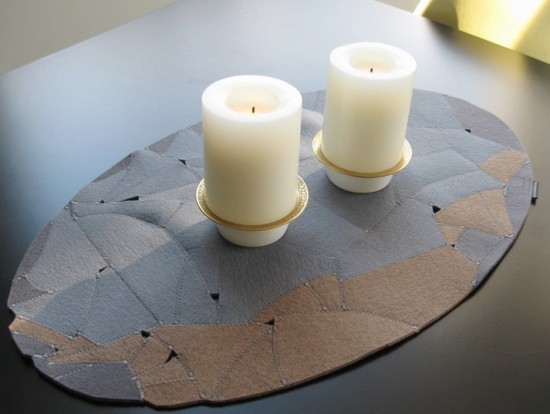
They take a silly amount of time to cut and sew together but I’m very pleased to not be wasting the fabric, and love the final pieces. The felt has a wonderful hand-feel and weight, and the zig-zag stitching holding the pieces together both ensures durability and adds a graphic visual element that I like. I find creating them it somewhat akin to drawing especially as each one is different, like a small piece of art.
‘Cruz Collection’ trivet & coaster sets
Some of the larger offcuts are cut and stitched with a simple cross pattern — dubbed the Cruz Collection and bundled into trivet and coaster sets. They make a perfect complement to one of the tea cosies, or alone as a gift set — a hostess gift perhaps?
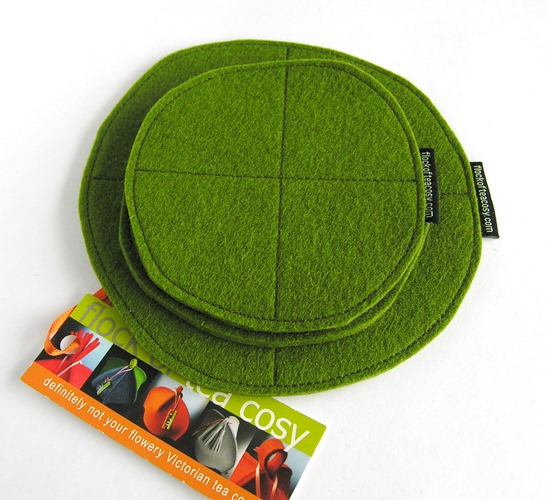
Shop trivets and coasters
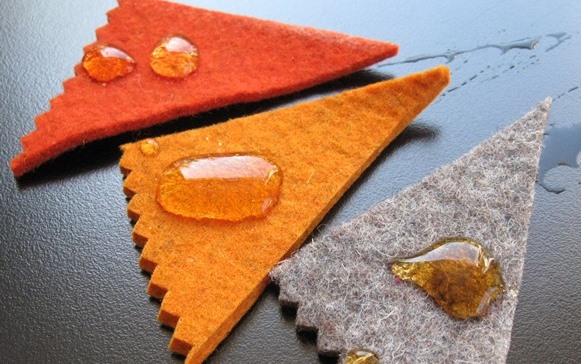
by Flock of Tea Cosy | Flock's Diary of modern wool felt teaware
Tea is widely used as a dye and its stains can be, well, a bugger to get out of a nice white shirt for instance. Since cleaning and care is a common question about these wool felt tea cosies I thought I’d re-post some cleaning tests I did a few years ago.
One can always take it to a dry cleaner, but some simple, quick action is really the best and easiest way to keep your wool felt tea cosy looking fresh and new:
In the name of science herewith a test run of tea stains on some samples of the felt used to make the flock’s tea cosies and a step by step on cleaning.
Firstly, felt is created by washing and mashing and washing and mashing wool so that its fibres all wrap around each other and become the lovely dense mass that we know and love. So don’t pop the felt tea cosy into the wash — either hand or machine — because it will continue the felting process. (Hands up all of us who’ve shrunk that beautiful wool sweater by putting in the washing machine.)
1. WOOL FELT RESISTS LIQUID
The dense wool naturally resists liquid, in this case a teaspoon of fine high-grown ceylon tea.
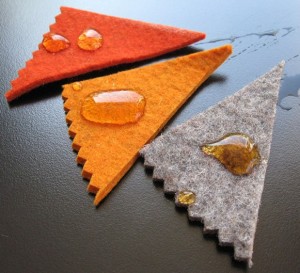
Note how the felt fabric naturally resists the liquid? Now’s the time to quickly blot it up.
2. BLOT THE LIQUID
Use a clean white paper towel or rag and gently blot the liquid. As the stain is absorbed into the paper towel, keep moving to a clean part of the towel so you’re not re-transferring the tea into the felt.
It all comes off with no staining evident.
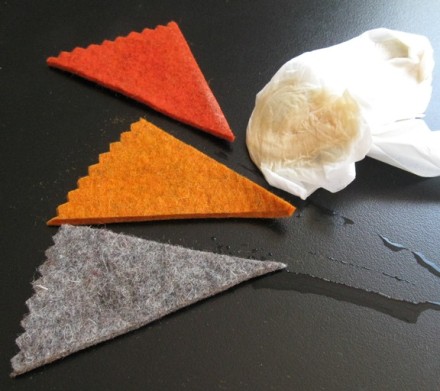
3. HEAVY TEA STAINING
With time and movement the tea will be absorbed by the felt fabric. So in the interest of science (and with some effort) some strong black tea was rubbed in to the wool felt samples. The Cornflower Blue sample was added for this test since it’s a paler colour.
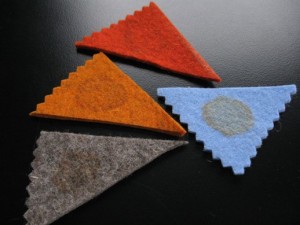
4. SPOT CLEANED AND BLOTTED
The tea spots were lifted on the Tangerine and Burnt Orange by firmly blotting with tepid water using a clean white paper towel. No soap or dish detergent was used — just water.
As the stain is absorbed into the paper towel, keep moving to a clean part of the towel so you’re not re-transfering the tea into the felt. Once clean, the samples were blot-dried using another clean paper towel. I used paper towels because they were handy and white, but a well used clean rag — well used so that all sizing is out of it and it’s super-absorbent — works too, of course.
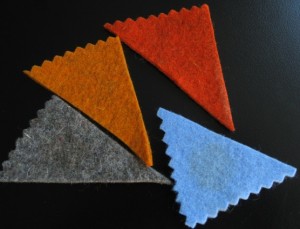
As you can see, there are no spots visible on the Tangerine and Burnt Orange samples, but there are spots faintly visible on the Industrial felt (which is 80% wool) and the Cornflower Blue samples.
5. SPOT CLEANED WITH WATER, SALT AND PEROXIDE BLEACH
So I went to work on the Industrial and the Cornflower Blue samples.
The Industrial came clean with just a bit more blotting with tepid water and clean white paper towel.
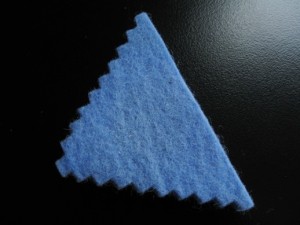
On the Cornflower Blue I tried i) baking powder (didn’t work), ii) salt (worked a bit) and finally iii) some hydrogen peroxide bleach. And it worked! I put about half a teaspoon on the sample and let it soak for a few minutes, then blotted it as dry as I could with clean white paper towel and let it dry on the windowsill.
Note: I used no soap or detergent in this test, either of which would have required rinsing which means more work and more wear on the felt finish.
THE UPSHOT
- Felt is naturally stain resistant (although not stain proof)
- Quickly blotting with a clean white paper towel or rag takes care of most accidents
- For settled stains, gently infuse the spot with tepid water and firmly blot with a clean white rag or paper towel. As the stain is absorbed into the paper towel, keep moving to a clean part of the towel so you’re not re-transferring the tea into the felt. When clean, blot dry (press firmly) with clean dry material. This generally does the trick.
- For the pale cosy colours I’ve had success with short (2 minute) spot-infusions of peroxide bleach (never use regular bleach) followed by gently blotting with tepid water, and finally blotting dry.

by Flock of Tea Cosy | Flock's Diary of modern wool felt teaware
It was love at first sight for me, because of its density and thickness and its vibrant colours, but a number of the reasons to love this beautiful, non-woven wool fabric are invisible.
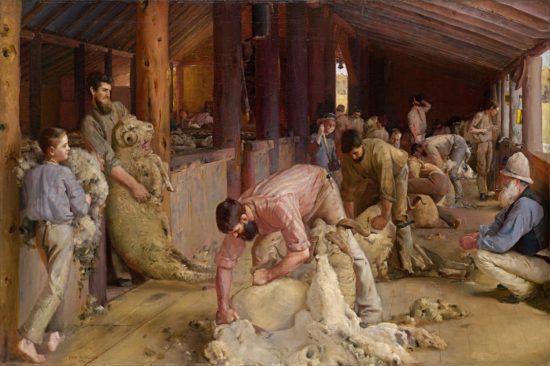
- It’s a renewable resource. Sheep continually grow their wonderful woolly coats which are sheared each spring.
- It’s naturally fire resistant and is self extinguishing. If you hold a match to genuine, 100% wool felt it will start to burn — but if you take the lit match away the fire on the felt will smoulder and go out on its own.
- It has high thermal insulating properties and this is what makes wool felt brilliant for a tea cosy. (It is also extremely sound absorbing but that doesn’t generally matter for tea cosies.)
- It’s naturally water repellent — spilt tea, for instance, will first bead on the surface of wool felt giving one the opportunity to quickly blot it up.
- However it can absorb liquid four times its weight which make me think it would make a good door mat — if it wasn’t so pricey. It also means wool felt makes great shoe inserts — insulating and absorbing the sweat or dampness. Unlike anything polyester (plastic).
- The European 100% wool felt that FoTC uses is the best in the world. Unlike made-in-you-know-where felt which, in my experience, can be easily shredded, this European felt is manufactured to the very highest quality and they’ve been making it for over a century.
- It’s manufactured in an eco friendly manner. The thick, colourful European felt is made to Oeko-Tex 100 standards which mean its manufacturing creates no toxic waste. Children could chew on it and live to tell — although not recommended!
- Frankly it just feels great. It has a wonderful soft yet sturdy hand-feel which is an important quality for items we touch on a daily basis.

Some interesting things that are (or were before being replaced by a plastic fabric) made of 100% wool felt are:
- shoe inserts
- piano hammers, bass drum strikers and timpani mallets
- chalk board erasers
- music cassette tapes — a tiny cube held the tape to the sound head
- roofing felt
- shoulder pads
- Valenki — a type of traditional Russian footwear which are warm and dry and with good traction for walking on dry snow when the weather is frosty.
- In the automotive industry it has been used to dampen the vibrations between interior panels and also to stop dirt entering into some ball/cup joints
- for framing paintings — laid between the slip mount and picture as a protective measure to avoid damage from rubbing to the edge of the painting.
- in millinary — many hats including fedoras
- horse saddle felt
- house and sound insulation batting — still being done
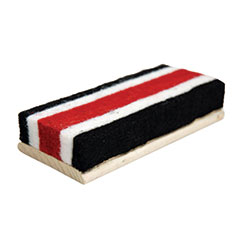
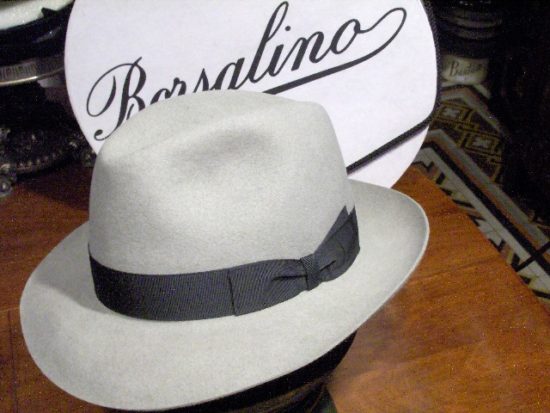

When I was in England a few years ago I came across a fascinating book on the felt industry there. The industry, like so many, is now pretty much gone. While some of the reasons the industry disappeared may be considered short-sighted it is certainly true that most industry has a finite life-span before something new — sometimes something wonderful — comes along and replaces it, changing the labour demographics and economies of towns and even nations. Plus ça change…n’est-ce que pas?
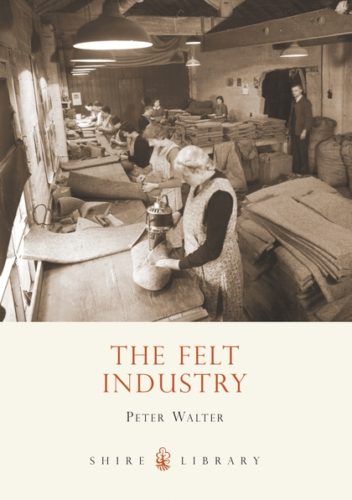
But wool felt has experienced a recent resurgence in the design and DIY fields. Beautiful furniture and household wares — including tea cosies, french press coffee cosies, mug warmers (!) — as well as fashion items are available and can be found through quick, easy internet searches. (Try duckduckgo.com for non-tracked searches.) For a great collection of contemporary wool felt pieces by designers and artists (ahem, including flockofteacosy.com) you might be interested in this Sydney Morning Herald piece from a few years ago.
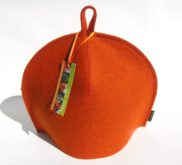
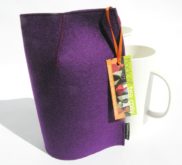

Flock of Tea Cosy’s shop.
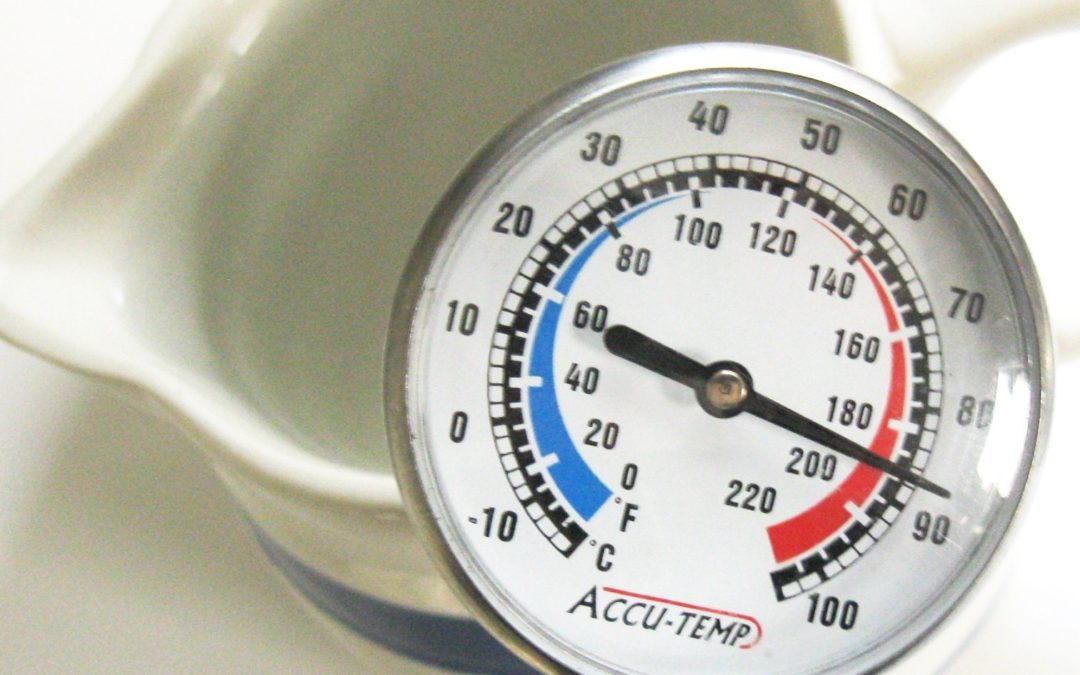
by Flock of Tea Cosy | Flock's Diary of modern wool felt teaware
Almost every tea culture does it — warms the teapot (or teacup) with the boiling water before making the tea in it. Why? Because the room-temperature vessel will steal almost ten degrees Celsius from the hot water. This means if you don’t pre-warm your teapot, your lovely tea loses that heat immediately. One of this flock of tea cosies will do an excellent job of keeping your pot of tea hot, but it can only maintain the heat that’s there.

As you can see, within about 20 seconds this room-temperature ceramic creamer stole over 10 degrees celcius heat from the boiling water just like a teapot does.

So warm that teapot first, then slip your tea cozy over it (say, isn’t that a smart modern tea cozy right there) — and you’ll have piping hot tea for ages.
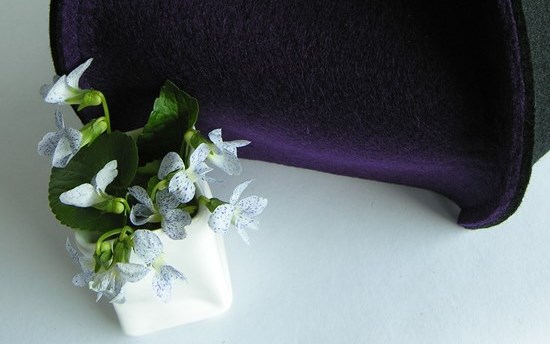
by Flock of Tea Cosy | Flock's Diary of modern wool felt teaware
Tea cozy hack and trivet test.
Customers are such an inventive lot. And helpful.
Fits a tall teapot too
Recently a customer ordered one of the flock’s cosies designed for a french press coffee maker, the 8-cup “Neu” design in Moss Green. Shortly after receiving it she wrote to tell me it fit her tall, narrow-proportioned teapot perfectly. A great customer cosy hack!
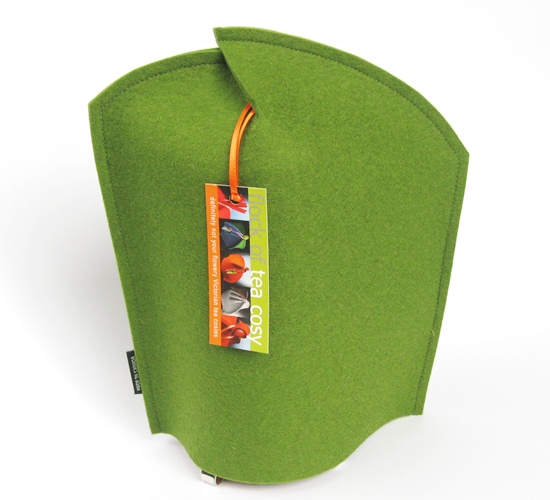
- “I love my green cozy. I have a tall teapot (I know it’s meant for a cafetierre) that I use every day and it fits perfectly!”
Trivets survive stove-hot espresso pot
I also recently received a query about whether the trivets could handle a hot-from-the-stove espresso pot. The colourful wool felt is wonderfully resilient, and perfect for protecting tabletops from hot teapots but I wasn’t confident enough to absolutely guarantee they’d hold up to stove-hot. It turns out they hold up just fine. On the flock’s behalf the customer put the trivet through its paces with her espresso pot and it came through with flying colours. No burn marks and no table-top harmed in the testing.

- “Ta dah! And worked out perfectly. No burn marks.”
Small tea cosy works as egg cosy
I mentioned this awhile ago but it’s worth mentioning again. A clever customer reported that the small tea cosies work wonderfully at keeping a bowl of soft boiled eggs hot on a Sunday morning. Another great tea cozy hack.
- “My wife and I are excited about the two new members of our tea family. They double as egg cozies as we soft boil several eggs and put them in a bowl.”

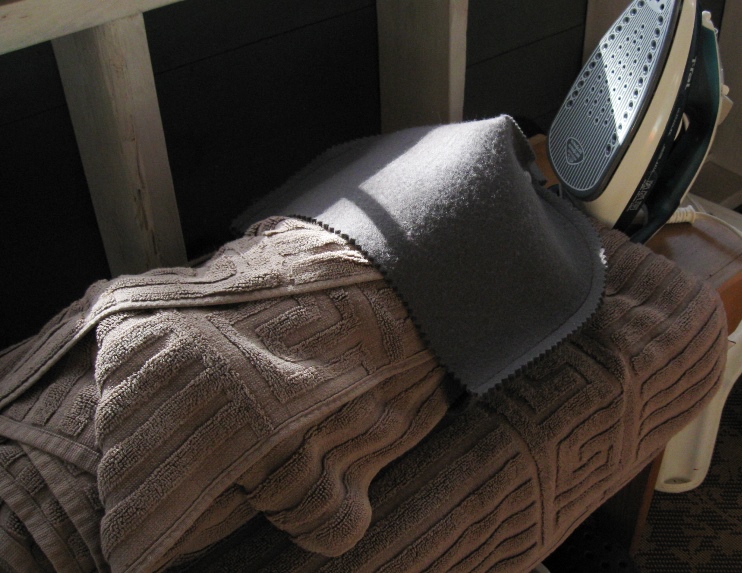
by Flock of Tea Cosy | Flock's Diary of modern wool felt teaware
Just back from a few days north of the city — still some spectacular colour clinging to the trees!
I was visiting SK, the friend to whom I’d given the very first tea cosy cut to what’s become the flock’s signature pattern — that rounded, Roman-helmet shape with a chatter of zig zag pinking along its edges.

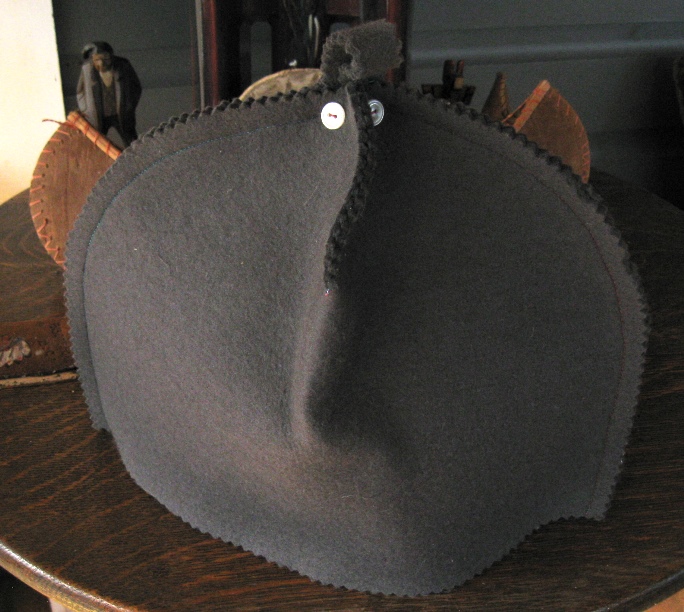
The cosy then and now. Not bad but life’s added a few creases and folds.
In the five years since it was made the cosy has experienced normal wear and tear and stuffing-in-drawers between tea-drinking visitors so, having a lazy afternoon at hand, I thought I’d see what kind of ‘spa’ rejuvenation I could render on it.

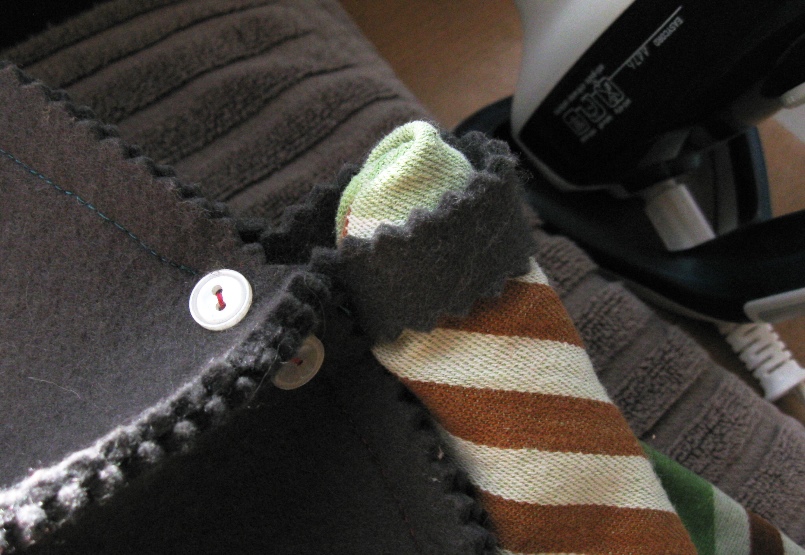
MacGyvoring a rolled thick bath towel to substitute for a small sleeve-ironing board, I placed a clean wet tea-towel between the felt tea cosy and the medium-hot (on medium steam setting) iron and gently and quickly ironed over the creases on both sides. Then rolled the tea towel to insert in the wonky top tab so it wouldn’t create a crease while I, again putting a clean wet tea towel between it and the iron, gave it a quick pass or two.
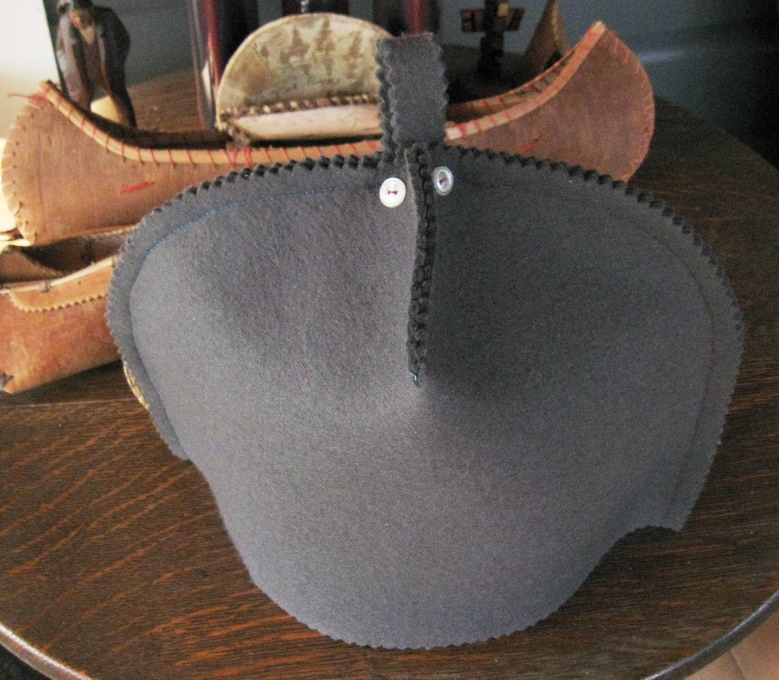
Et voila — pleased to report that a little steam ironing with a wet tea-towel between the felt and the medium-hot iron worked wonders. Just like it’d spent a day at the spa.


The marshes and streams were bursting with beautiful bright red berries. I don’t know what they are but I brought home an armload for the dining table.




































